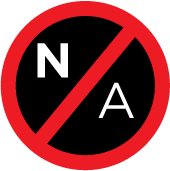Advice and Resources for Musicians who Want Better Media Coverage

My education was in music, but my career has primarily been in advertising and public relations, even though I also still play and teach. In my experience, musicians have all the skills necessary to be effective at PR and marketing but often have to learn the hard way how to marshal those resources in service of their music.
It’s easy to wind up with a haphazard approach to PR and it’s tempting to outsource that work to someone who isn’t so busy putting together programs and rehearsals.
My hope is that with a little work structuring your PR approach, you can find you have the time and ability to get more publicity for your work all on your own. (Still interested in outsourcing that work? See the note below on hiring a paid or volunteer PR person.)
What is Public Relations (PR)?
“Public relations is a strategic communication process that builds mutually beneficial relationships between organizations and their publics.” — Public Relations Society of America (PRSA)
You’ve probably heard (or said) that something a company did was for good PR or resulted in bad PR. That can give you the impression that all PR is about public perception. In truth, the practice of PR is as much about planning for the release of information (formulating story lines, identifying audiences which can include media, etc.) as it is about garnering publicity. To a PR person, media relations, crisis communications, internal communications, speechwriting, events and investor relations are all “PR.” However, for our purposes, the terms PR, publicity and media relations are more or less synonymous. I use PR a lot below for simplicity, but we're talking specifically about the media relations area of the larger body of PR work.
Who is your audience?
Before you know what you are going to say or where you’re going to say it, you need to know who you are talking to. This can be a deceptively hard step in the process. Even communications professionals and executives at big companies struggle to understand their key audiences. (No, “everyone” is not an audience, despite many a CEO’s attempt to make it one.)
For your purposes, it’s probably relatively easy to narrow it down some. Primarily you are looking for people who are interested in going to concerts. If you perform music from a particular genre or era, there is already a subset of concert-going audiences who are interested in your genre. But, I’d challenge you to break it down even further than that. Think about your audiences and, in particular, those who not only attend concerts but act as connectors, spreading word of the performances to friends and colleagues. If you can aim your message at those people, you can do more with less effort.
Write down two to three archetypes of audience members and, whenever you’re crafting your marketing materials, refer back to see how well those pieces speak to those audiences. If a poster or email or social post doesn’t speak at all to any of the audiences you’ve set out, it’s worth considering if it’s the right approach for your event. (Or if you missed an audience.)
What is your story?
What is unique about your group or program? Why would someone be interested in your performance among all the possible ways to spend their time? If there’s a first (a world premiere, the first time a notable visiting artist is performing in town, the first performance after a major award), that’s a good place to start. Another important thing to consider when crafting your story is what your key audience members might find interesting about your story.
But, your story is not a dissertation or even program notes. Keep it short. Maybe a little longer than an elevator pitch. And then literally write it out. Keep it in a document in a cloud storage folder where you can easily and quickly access it or share it with collaborators, volunteers, patrons, media members, etc.
While you’re at it, put bios of everyone involved and all the relevant high-res art and photos that you can find into this folder. Congratulations, you now have an EPK (electronic press kit)! One thing you probably do not need is a full press release. A media advisory with a very short description and event location and time details can be helpful to include pasted below your signature.
How do you get your story to your audience?
Once you know your audience and you have your story written out, it’s time to work to get that story in front of your audience. This can mean all sorts of marketing efforts, from email blasts to social posts... maybe even direct mail, if that makes sense. But, for this post, I want to talk about just one of the many channels you should pursue at once: publicity, or getting your story out through the media.
You’ll want to submit your event to calendars, of course, but to really get attention, you’ll want mentions of your events in print, online and on TV.
There’s basically two ways to get into a news article or segment: 1) make so large an impact that the journalists seek you out or 2) contact the journalists and ask for coverage.
If you can do option one, by all means go that route. (The good news is that publicity can be self-perpetuating... journalists who cover a topic tend to read other coverage of that topic, so they may become aware of you through that and seek you out.)
For most of us, we have to reach out to journalists with a pitch. Your pitch is usually an email stating your story and why the journalist should care, and is best if it’s very short. It can be tempting to put all the information you think they might need into the pitch, but, trust me, they can always get more info from you if they plan to write about it. If your email is long (like this post), it will likely not get read.
Do not blast pitch and don’t let others do so on your behalf
While every pitch should include your story and clearly communicate why the journalist should be interested, each email should be crafted individually to each journalist. This is not as hard as it sounds. And in the music industry, there are only so many folks to reach out to, even on a national level. Pick the small handful of journalists in the area local to your concert, or in local areas relevant to the performers or topic if it’s an online event, and then read what those journalists have written. This will help you identify the “why” in your pitch. Having been on both sides of a pitch, I can tell you for certain that the volume you get from blasting out irrelevant pitches is wasted effort.
Before you hire a PR person
If this is all too much to take on and you have the resources (financial or volunteer) to outsource this work, it’s important to keep in mind that their actions reflect on you. Make sure they aren’t sending out blast or irrelevant pitches and make sure they are properly representing your story. Tubist Andrew Hitz often mentions bad and irrelevant pitches on his podcast The Entrepreneurial Musician. Most of those bad pitches come from PR people hired to get people publicity.
If you are looking to use a paid or volunteer PR person, find out what their approach to media pitching is and find out how they will help you craft your story.
Also, keep in mind that, even if you don’t have time to do the research and outreach yourself, you’ll want to be available for interviews and appearances if that PR outreach works.
PR is ultimately about relationships, and you’ll want to build relationships with journalists directly, even if you’re working through a vendor or volunteer.
Resources
- Muck Rack: How to create a media list
- Muck Rack: How to pitch in 2020, backed by statistics
- Spin Sucks: Five Terrible Media Pitch Examples and What to Learn from Them
- Muck Rack: How to pitch podcasts: 4 tips for success
- Help a Reporter Out (HARO) (If you sign up on this site, you’ll get a digest of requests from reporters for sources. Relatively few will be relevant to you, but the few that are might make it worth it.)
- HubSpot: How to write a press release
- Fit Small Business: How to write a media advisory
- The Hodges Partnership: And here comes the pitch (Advice on pitching from the VP of media relations at my agency.)

